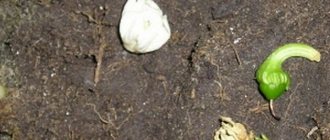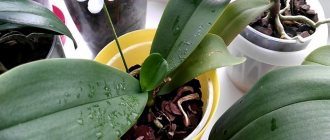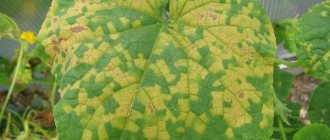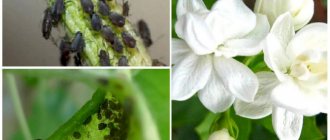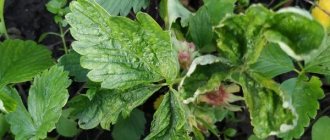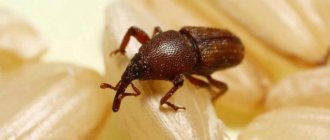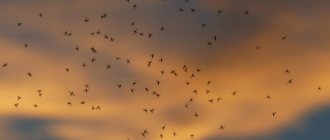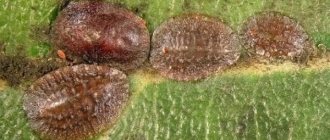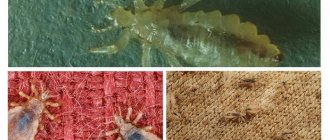Not a single ficus will be affected by disease just like that. There are a number of nuances that lead to problems.
These include:
- non-compliance with temperature conditions;
- dryness in the room;
- improper watering;
- unsatisfactory soil composition;
- lack of light in the room or excessive amount of it;
- improper application of fertilizers;
- installing a flower pot outside.
Such moments are reflected in the ficus, and this leads to the flower being affected by one or another disease, which can be difficult to get rid of. Typically, problems with the plant affect the leaf blades, which turn yellow and fall off. Each such moment may indicate a particular disease or inaccuracies in care.
Yellowing of leaves
If it was noticed that the leaves of the ficus began to turn yellow, then most likely the reason is dry air. Often this problem makes itself felt in winter, when all kinds of heating devices are running. Without paying due attention to the unpleasant nuance, you can lose the flower.
In this case, you don’t even need to know how to cure a ficus, because dryness is part of improper care and eliminating the nuance will not be difficult. To do this, place a container of water next to the flower and irrigate it.
Important! Ficuses do not like changing their habitat. Rearranging the flower leads to yellowing of the leaf plate! All you need to do in this case is simply not to touch the flower pot.
Optimal conditions for growth and avoidance of diseases of Ficus Benjamin
Often diseases appear in ficus due to the wrong location or air temperature, therefore, in order for the flower to be comfortable, it must be placed in a place where there is good lighting and no draft. Often it is a draft that causes the death of a plant. For Ficus Benjamin, the optimal air temperature is 15°C.
You need to water the flower in moderation. In the summer, this should be done no more than 2 times a week. In cold weather, watering is carried out once every 10 days. Only under such conditions of detention can the occurrence of various ailments be avoided.
How does lack of moisture and waterlogging affect flowers?
The wilting of the flower, the falling leaves, the yellowing of the leaf blade along the edge or in the center indicate excessive watering. Moisture is good, but only in moderation. Otherwise, the rhizome rots and the plant dies. Some inexperienced flower growers begin to struggle with non-existent diseases, wasting precious time. Although external factors should be excluded first. To solve the problem, it is enough to cut off the rotten roots, treat the cuts well with charcoal, and then transplant the flower into new soil.
Important! After transplanting, the plant only needs to be watered a little. Filling it means returning to a previously resolved problem.
Curling of the foliage or drying of the leaf plate indicates that the ficus is not receiving enough moisture. Such a plant should be watered and irrigated.
Common problems
If you do not comply with the growing conditions, then the ficus will not look healthy. It is not necessary that the bush is affected by insects or disease; sometimes the problem is due to insufficient lighting. Pale and yellowing of the leaves indicates a lack of the required amount of light. In this case, you just need to move the pot closer to the window, and in winter add artificial lighting.
The appearance of brown spots is a sign of a burn from direct sunlight.
It also happens that the falling of leaves and the appearance of blackening are the result of frostbite on the plant. You can revive the plant at home. The most important thing is to eliminate the source of the draft and create conditions for resuscitation. Under no circumstances should you water the flower; you need to wait until the soil dries well. The necessary moisture is provided by spraying the foliage with warm and settled water. As soon as new shoots appear, it is possible to resume watering and use Kornevin, a growth activator. "Orton Growth" is used as a top dressing 2 times every week.
If the flower dries out or has already dried up, then you need to restore it immediately. To do this, use high-quality watering and a lot of diffused light in combination with stimulants. The root system is freed from the soil and placed in water, waiting for new shoots to appear.
What other reasons can negatively affect ficus?
If the leaves turn black or their color changes to dark brown, it means that the room is either too hot, or the grower has gone too far with the frequency of fertilization.
You should not immediately blame diseases and pests if the plant sheds its lower leaves. This is an absolutely normal process. There is no need to do anything.
However, if the process does not stop and the trunk is noticeably exposed, then it is urgent to transplant the flower into new purchased soil. Most likely, the substrate was chosen or formulated incorrectly.
The dying off of the foliage indicates that the ficus has been affected by disease. We can say more accurately after a thorough examination of the plant.
Ways to combat insects without “chemistry”
You can try to deal with mealybugs without resorting to chemicals, especially if there are not too many insects. Amateur gardeners have tested many folk remedies for mealybugs, and some have shown high effectiveness.
Stages of work:
- First, the plant is isolated.
- Cut off the affected shoots and leaves, buds and flowers, ovaries and fruits.
- Using tweezers, a damp swab or a cotton swab (a toothpick or a match with cotton wool wound around it), remove lumps of fluff and insects from the stems and large leaves, penetrating into the leaf axils and folds, not forgetting to look under the leaves.
- All affected areas should be wiped with alcohol or a pharmaceutical alcohol tincture of calendula (vodka is not suitable due to the low concentration of alcohol). This will help remove the smallest wandering larvae, as well as sticky plaque.
- The bottom of the pot and under the rim should also be treated.
- The pseudobulbs of orchids are wiped with alcohol, having previously cleared them of dry scales.
- After these procedures, it is recommended to treat the plants three times at weekly intervals. For this, special solutions are prepared, choosing one of the convenient options; They are applied to plants by spraying or brushing. When spraying, cover the soil in the pot from getting the drug.
Folk remedies (optional):
- Lemon and/or orange peels - daily infusion of 50 g per liter of boiling water.
- Garlic (cloves) – chop 8 cloves, pour in a liter of boiling water, leave for 4-6 hours, strain.
- Tobacco decoction: 100 g is boiled in a liter of water for half an hour, after a day it is filtered and diluted 2-3 times with water. The product is poisonous and must be handled very carefully!
- Pharmaceutical oil extract of horsetail. An infusion of dry horsetail herb is also prepared: 100 g per liter of boiling water.
- Olive oil – 1 tbsp. l. for half a liter of water. The oil film interferes with the breathing of pests.
- Soap solution: 1 tsp. crushed laundry soap per 1 liter of water. You can use store-bought insecticide Green soap (1 tbsp per 1 liter of water). It is recommended to add 2 tbsp to the solution. l. vodka. This remedy is used several times every 3 days.
- You can try to destroy the root bug with hot water. The roots are immersed for a quarter of an hour in a large container of water, the temperature of which is strictly +55 degrees.
After treatment, it is recommended to replant the plants. The pots are thoroughly washed with a strong soap solution, and the suspicious soil is fried in the oven.
Pests on ficus
Pests of Ficus Benjamin, like other varieties of flowers, are waiting at almost every turn. Every new plant purchased is a danger for guests, since it often introduces various pests, which can be difficult to get rid of.
Often we are talking about:
- scale insect;
- spider mite;
- aphids;
- thrips;
- mealyworm;
- powdery mildew.
Shchitovka
Red dots on the inside of the leaf indicate that the flower has a scale insect.
In this case, spots sometimes appear on the trunk of the plant. The pest feeds on the sap, leaving an unpleasant coating, which is a springboard for the proliferation of sooty fungus. As for how to treat the plant, everything is quite simple. Ficus is treated with soapy water. And then sprayed with Actellik once a week. The procedure is performed three times.
Spider mite
Yellow and red spider mites are another pest that affects ficus. This is evidenced by a coating of gray leaves. Over time, the flower becomes like some kind of cocoon, because it is completely entwined with a web. The problem occurs due to dry air or strong stuffiness in the room.
The first thing a gardener should do when noticing this is to wash the flower well with soapy water. Next, you should definitely take care of good humidity in the room, which ticks cannot tolerate. In order to completely get rid of the pest, it is recommended to “bathe” the plant in the shower. After this, it would not be a bad idea to cover the pot with ficus with polyethylene and leave it in this state for a couple of days. At an advanced stage, it is necessary to treat with insecticides.
Aphid
This is a particularly dangerous pest because it can fly, infecting all the plants around it. Most often, aphids “settle” on the inside of the leaf plate. This leads to yellowing and curling of the leaves. The situation can be corrected by spraying with a solution of pyrethrum.
Thrips
Thrips live where it is warm and humid.
Important! If the gardener has such conditions in his room, then you can expect the pest to appear on the back of the leaves.
A white coating that gradually turns yellow indicates the presence of thrips. You can fight them with a solution of pyrethrum or Artellik.
Mealybug
The mealybug is dangerous because, by sucking the juice from the plant, it stops its development. Sometimes you can notice blackened leaves that soon fall off. The pest is extremely dangerous because it quickly moves to neighboring healthy flowers. Usually the brown insect hides in the axils of the leaf blades.
In order to get rid of the scale insect, you should thoroughly clean the ficus from plaque, and then spray the flower with a solution of soap or tobacco. The procedure is repeated daily for a week.
If the presented pests have completely affected the ficus, then you should not hesitate; you must immediately treat it with Confidor.
Powdery mildew
Powdery mildew brings with it a whitish coating on the leaves. Some gardeners mistakenly think that this causes the ficus leaf plates to turn black. This can happen, but only when the pest completely infects the flower. It's not worth bringing it to this point. Having noticed whitishness, you should immediately treat it with fungicides, thoroughly sprinkling the entire plant so that the liquid drips directly from it.
Signs of scale insect infestation
You need to start taking measures to save the ficus if:
- A sticky coating resembling syrup appeared on the leaves. This substance is called honeydew or honeydew. The scale insect, being voracious, often draws more juice from plants than it can absorb and releases its excess outside. Such an environment is fertile for the appearance of sooty fungus, which also causes damage.
- Upon careful examination of the ficus (preferably under magnification), you can see the larvae and females of the scale insects, which have a dirty gray or brown color.
- Damaged areas of leaves begin to be overgrown with new tissue, so bumps appear on its surface. Ultimately, the sheet plate takes on a deformed appearance.
- Ficus leaves turn red and gradually die.
- When the infection is advanced, individual shoots begin to die, and the growth of the entire plant stops.
If the pest’s “work experience” exceeds more than 2 years, then its parasitic activity leads to massive death of leaves and drying out of branches. The bark on the trunk and shoots begins to crack.
Fungal and infectious diseases
Ficus Benjamin diseases are not as easy to eliminate as pests. The reason is that signs of some changes do not appear immediately, but gradually. Sometimes gardeners cannot recognize them even at an advanced stage.
If we talk about which diseases of rubber ficus are the most common, then the following should be noted:
- sooty mushroom;
- mold;
- root rot;
- fungal diseases of leaves.
Sooty mushroom
This disease is caused by scale insects and aphids. If pests are identified in a timely manner, Ficus Benjamin will not be affected by diseases. The disease is eliminated by treating the flower with a soap solution or fungicides.
Mold
Another disease is called gray rot, during which the leaves darken and then die. With such a disease of ficuses, their treatment is carried out comprehensively. The affected areas are removed, the amount of watering of the flower is reduced, and the room is well ventilated.
Root rot
Unfortunately, this problem can rarely be solved, since the flooded flower, or rather its root system, completely rots.
Fungicide for the treatment of rubber
The fungicide solution helps control pests well. Today there are several biological poisons that help effectively fight ficus diseases:
- Copper-containing (iron sulfate, manganese, potassium). Effective against anthracnose, powdery mildew and a number of pests.
- Organic , based on a number of chemical compounds. Used against fungi. The effectiveness depends on the specific plant and the severity of its damage.
- Biological - fights diseases, rot and insects well.
In specialized stores you can always find the necessary drug to save the plant.
Thus, spots on ficus leaves are an alarm bell. This means that the plant has been attacked by pests, bacteria or fungi . It is urgent to understand what the reason is and begin to act. Untimely control methods can cause the death of the tree.
Ficus is a picky plant. Does not require special knowledge or care skills. But if you don’t pay attention to it at all, and don’t follow the basic rules of maintenance, the flower will begin to fade. Some ficus diseases can cause not only deterioration in appearance, but also its death.
Fungal diseases of leaves
The disease usually affects ficus lyreate, although other varieties may be at risk. The most common fungal diseases are Botrytis and Anthracnose, during which rusty spots appear on the leaves, which eventually turn into ulcers. Such leaf plates die off very quickly. Timely treatment with fungicides can solve the problem.
Ficus diseases are not uncommon, but this can be avoided if you properly care for the plant.
Prevention measures
To avoid the spread of diseases, it is necessary to carry out preventive measures in a timely manner, which include maintaining an optimal indoor microclimate and proper care.
Basic preventive measures:
- Maintaining temperature within +17…+25°С.
- Maintaining humidity within 60%.
- High-quality ventilation of premises.
- Annual replanting for plants up to 3–4 years old, then every 2 years.
- Irrigate only after the top layer of soil has dried to a depth of 2–4 cm.
- Providing an abundant flow of diffused light.
- Application of complex fertilizing from May to September once every 2 weeks.
- Timely removal of old, broken, underdeveloped shoots that thicken the crown.
- High-quality disinfection of soil during planting/transplanting.
- Preventive treatments with Fitosporin once during the entire active growing season.
Did you know? Ficus Benjamina is a valuable medicinal plant. Its leaf blades, crushed into pulp, help heal wounds.
Most often, Ficus Benjamin is susceptible to fungal diseases. You can avoid their spread by properly caring for the plant.
Harmful insects
Some plants are better equipped to handle pests, while others need a little extra help. Before purchasing a ficus tree, it is important to research what problems are common with these beautiful trees.
- Mealybug. They are small white furry sucking insects that gather in large clusters. They may appear after watering as they crawl to the surface of the soil. They can be seen in areas of the plant where branches meet the main stem. There are several ways to treat insects. You can spray the foliage with horticultural oil or treat the soil with chemicals. If you don’t want to use chemicals, then spray a soap solution. The liquid is prepared at the rate of 1 tablespoon of soap per 4.5 liters of water.
- Centipedes. These are brown insects with a long body and many legs. If they appear, it is likely that the soil was not sterilized before the tree was planted in it. The best way to combat this problem is to change the soil and sterilize the new one. The pot should also be cleaned - this is the only way to ensure that the grower is free of pests.
- Shield. Like other insects, scale insects do not tolerate high humidity and soapy treatment. Saving a plant from it is not difficult, you just need to spend a little time on processing.
- Thrips. This is an insect that is difficult to get rid of and even more difficult to see because it is so small. You can inspect the foliage for the appearance of small dark spots, that is, waste that they leave on the ficus. To get rid of them, you first need to water the plant from the shower, then spray it with neem oil.
- Whiteflies . They often attack the flower. They immediately become visible due to their white coating. To prevent their occurrence, it is necessary to use neem oil sprays. Standard yellow sticky traps also work well.
- Spider mites. You can get rid of them with a simple soap solution or a strong shower.
- Aphid . When branches and leaves curl, this may be a sign that aphids have appeared, which, in turn, are also carriers of bacterial diseases. They get rid of it with an alcohol solution, which needs to be used to wipe the trunk and leaves.
